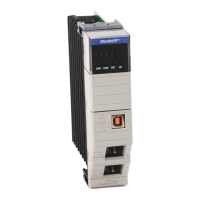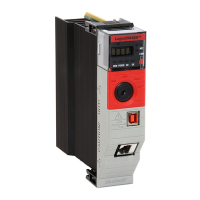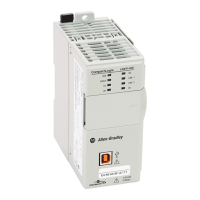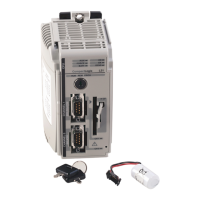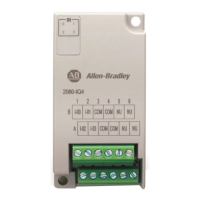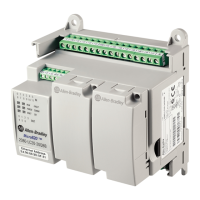CIP Over the Controller Serial Port
78 Rockwell Automation Publication 1756-PM020F-EN-P - January 2019
The following is an example of the fields for a CIP explicit message
connection using a Class 3 Transport encapsulated in PCCC sent
unfragmented, using DF1 Full Duplex on RS-232.
Name Type Description of Request Parameter Semantics of Values
DLE USINT ASCII escape character See the DF1 Protocol and Command Set Reference
Manual, publication 1770-6.5.16.
STX USINT Start of message
DST USINT Address of destination
SRC USINT Address of source
CMD USINT Command = 0Ahex
STS USINT Status (0 in request) See the DF1 Protocol and Command Set Reference
Manual, publication 1770-6.5.16.
TNSW UINT Transaction sequence number
FNC USINT Fragmentation protocol function Fragmentation Protocol
00hex (Only function)
Extra USINT Additional information for fragmentation protocol Fragmentation Protocol
00hex (Only has no Extra)
CID UINT O-T Connection ID Refer to the CIP Specification
Transport Header UINT Transport class 3 Sequence Count
Request Service USINT CIP Service Code See CIP Services.
Request Path Size USINT Number of 16-bit words in the Request Path
Request Path EPATH Logical or Symbolic Segments, or both
Service Data
Service data
DLE USINT ASCII escape character See the DF1 Protocol and Command Set Reference
Manual, publication 1770-6.5.16.
ETX USINT End of message
BCC or CRC USINT or UINT Block Check Character
Cyclic Redundancy Check See the DF1 Protocol and
Command Set Reference
Manual, publication
1770-6.5.16.
See also
Fragmentation Protocol on page 78
CIP Service Request/Response Format on page 17
CIP services on page 13
The fragmentation protocol allows messages up to 510 bytes to be sent over
PCCC/DF1, which has an inherent limit of 240 bytes. It allows each
fragment to be identified as it is transferred, with each fragment being
acknowledged (Ack or Nak) before the next fragment is sent, and provides
the ability for the client device to abort the fragmentation sequence if
necessary. This fragmentation protocol is used only with the 0A and 0B
PCCC commands.
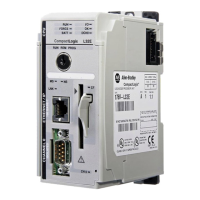
